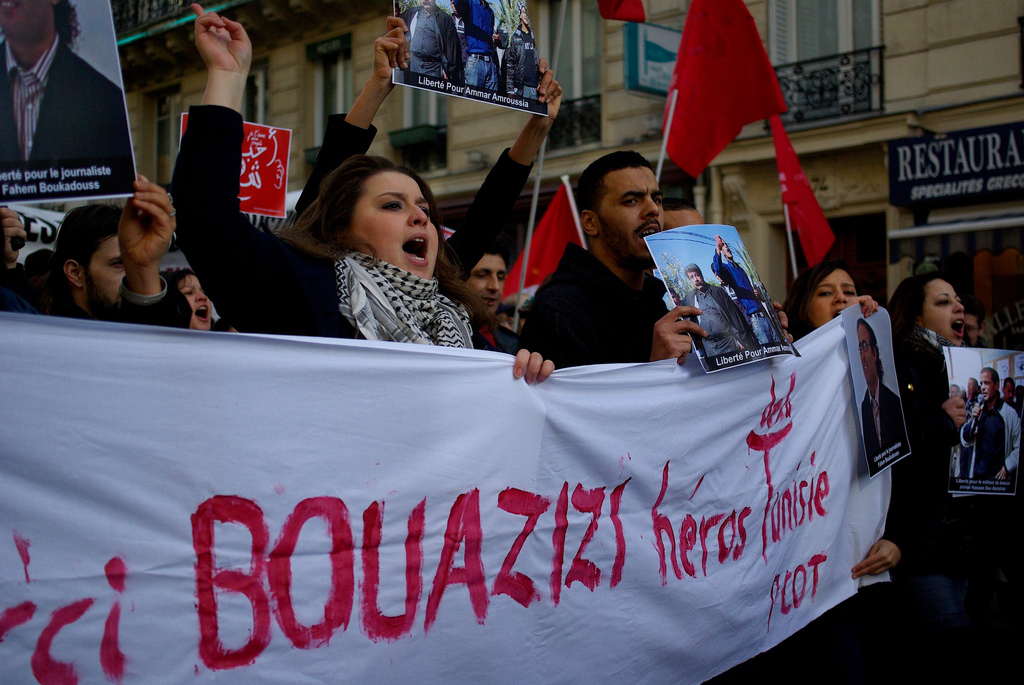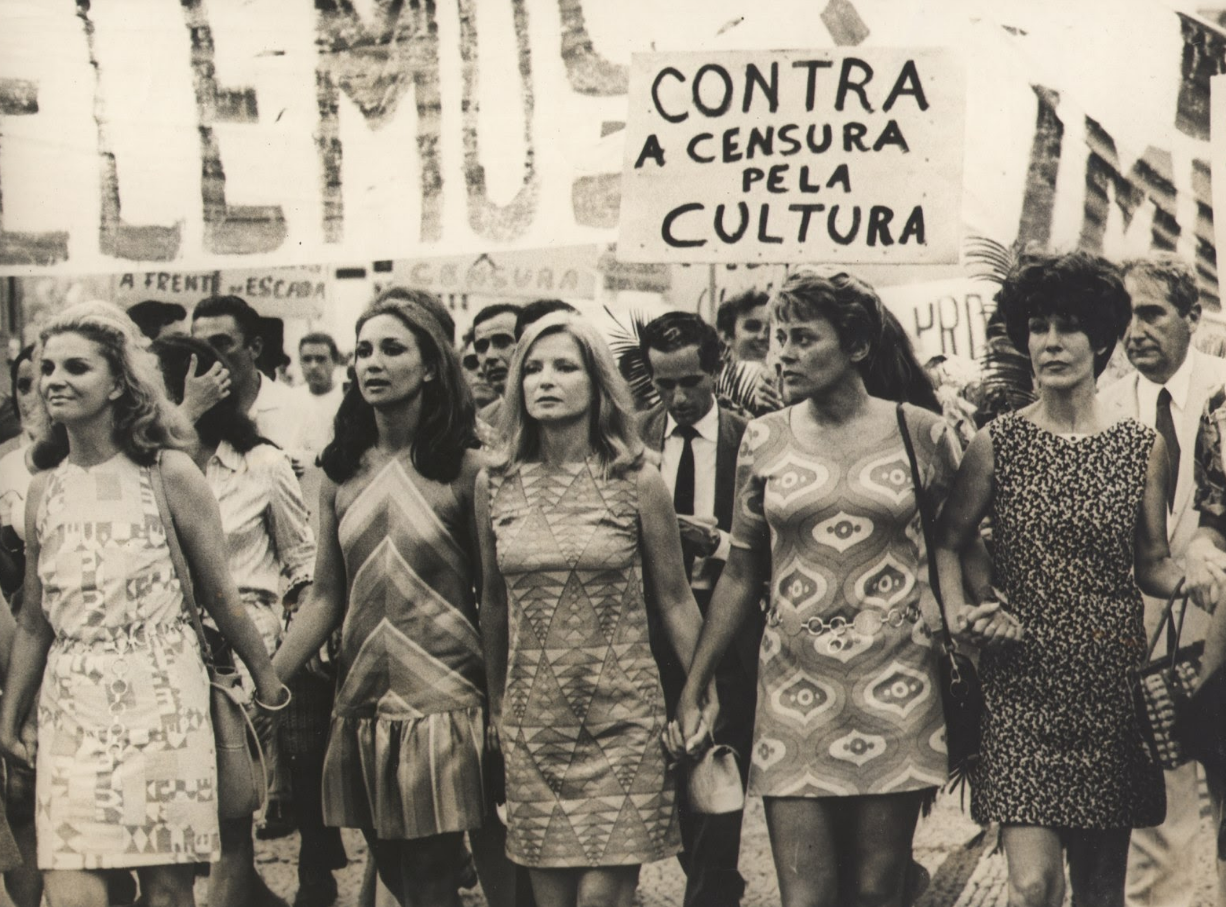Mohamed Bouazizi was a college graduate and yet at twenty-six years old he found himself selling fruit on the side of the street to support his mother, uncle and five siblings in their hometown of Sidi Bouzid. According to a report by the New York Times,[i] a municipal inspector, Faida Hamdy, seized Bouazizi’s goods because of his failure to pay a government fine. It was more than the young man could stand. Two of Hamdy’s colleagues beat Bouazizi on the spot. Later that day he was beaten outside the city’s municipal building where he went to demand the return of his property. He was denied an audience with the governor and denied the return of his goods.
At noon on December 17, 2010 Bouazizi doused himself in paint thinner outside the governor’s gate and lit himself on fire. He died fifteen days later on January 4, 2011 with burns covering more than 90% of his body. The horrific scene galvanized locals who swelled his funeral procession to five thousand people and causing twenty-eight days of unrest throughout the country. On January 14, President Zine el-Abidine Ben Ali was forced to resign and flee the country to Saudi Arabia.
With a single action indicative of the frustrations and burdens of an unemployed youth, Bouazizi became a martyr for the people of Tunisia. It was the breaking point needed for the Tunisian people to finally topple the twenty-three year authoritarian rule of Ben Ali. For the first time in history, a leader in an Arab country was forced to resign and flee because of the popular will of the people and the push for democracy.
Foreign journalists have dubbed the protests and toppling of Ben Ali’s regime “The Jasmine Revolution,” placing it in line with the color revolutions of the former Soviet bloc states and the Balkans. The color revolutions were non-violent uprisings against corrupt and authoritarian governments by people seeking democratic reform. In Tunisia the events were similar and the uprisings were for the most part non-violent. Another similarity between the color revolutions and the events in Tunisia is that the Jasmine Revolution could be just the first of several democratic revolutions in the area. Peoples of one country are often inspired by the actions of others, and through technology, word of their triumphs has already spread and begun the process of change in countries like Egypt. Roping this revolution in with the color revolutions, however, deemphasizes the role that social media and the Internet have played in this movement’s ability to manifest and maintain itself. The protesters used websites like Facebook and Twitter to gain support and organize rallies.

Tunisia was a country primed for a revolution. Popular frustration with Ben Ali’s authoritarian rule and secret police kept people in fear through state repression. Corruption among the ruling elite was rampant, evidenced by Ben Ali’s hairdresser wife bringing one and a half tons of gold with them when they fled the country. Bribes were commonplace and the only way to do business. The majority of the Tunisian people were raised to fear the government and not to question the strong rule of Ben Ali. And so how then did one man’s action trigger such a large revolution? Bouazizi’s actions were taken up as a rallying cry by the young and educated who understood his frustrations and shared his views. They used social networking sites, their cell phones and word of mouth to spread their cause. They received support from thousands of outsiders through Tweets and support groups made on Facebook. The will and the power to take on a corrupt government and root out change rested with the youth. Their actions have changed their country and in turn, their futures.
Many developing nations like Tunisia have seen an increase in their youth populations over the past few decades. This ‘youth bulge’ is caused by an increase in basic health care beginning the in the 1960s and 1970s. In a country with over 10 million people, Tunisia’s median age is roughly 30 years old.[ii] This is young compared to countries of the developed world, such as Japan where the median age is 45[iii] and Canada where the median age is 41.[iv] This means there are more young and ambitious individuals who are frustrated because they cannot find a job, especially with a national unemployment rate of 14% in Tunisia.[v] These frustrations finally lead to revolution.
As of February 7, 2011, the interior minister suspended all activities of the Democratic Constitutional Rally, Ben Ali’s party.[vi] Protests continue as the caretaker government tries to stabilize the country and remove all traces of Ben Ali’s former government. This will take time and the Tunisian people will continue to be weary of those in power until they prove they can be trusted. As of February 8, 2011, the army is in place to try and help restore order.[vii] This included calling up reservists and recently retired members of the armed forces because the armed forces only numbers at around 45,000 while the police number over 100,000 strong. And so the next issue to be addressed must be the country’s police force, which for twenty-three years was the long arm of Ben Ali. It is the police that the people now resent the most and will continue to protest and fight.
While conflict is not new to the region, the Middle East and North Africa have been the one part of the world that has avoided Samuel Huntington’s three waves of democracy.[viii] Huntington pointed to three distinct periods in history where the world saw a large number of nations start the transition from authoritarian governments to democratic ones. He argues that while not all make the transition to democracy, enough stay democratic for the wave to have had an impact. Tunisia could be the trigger to spark the fourth wave through the Arab world. Already the events in Tunisia have led to protests and change in Egypt, the largest protests in Egypt since the 1970s ‘bread riots’ when citizens protested rising food prices. At the time of writing, the protests continue to rage in Egypt with President Hosni Mubarak stepping down on February 11 after thirty years in power and a military government promising a transition to democracy and free elections. In an effort to slow the protests and disable the protesters, over eighty percent of the country’s Internet was shut down. In Syria, as elsewhere, the government has sought to stave off protests by making economic concessions to public sector workers and you. Peaceful protests have begun in Yemen to overthrow the government; however protesters warn that once they begin wearing red, they will no longer protest peacefully. In Jordan the king has replaced his prime minister and cabinet, efforts aimed at appeasing the people and quash unrest in that country. So if Huntington is correct, the Tunisian spark will have not only ignited Egypt into revolution, but will continue to spread across North Africa and the Middle East.
[i] Karem Fahim, “Slap to a Man’s Pride Set Off Tumult in Tunisia,” New York Times, January 21, 2011, accessed February 10, 2011, http://www.nytimes.com/2011/01/22/world/africa/22sidi.html?scp=1&sq=tunisia%20faida%20hamdy&st=cse
[ii] “Tunisia,” CIA World Factbook, accessed February 10, 2011, https://www.cia.gov/library/publications/the-world-factbook/geos/ts.html
[iii] “Japan,” CIA World Factbook, accessed February 10, 2011, https://www.cia.gov/library/publications/the-world-factbook/geos/ja.html
[iv] “Canada,” CIA World Factbook, accessed February 10, 2011, https://www.cia.gov/library/publications/the-world-factbook/geos/ca.html
[v] “Unemployment Rate,” CIA World Factbook, accessed February 10, 2011, https://www.cia.gov/library/publications/the-world-factbook/rankorder/2129rank.html?countryName=Tunisia&countryCode=ts®ionCode=af&rank=143#ts
[vi] The Associated Press, “Political Party of Ex-Leader is Suspended in Tunisia,” New York Times, February 6, 2011, accessed February 10, 2011, http://www.nytimes.com/2011/02/07/world/africa/07tunisia.html?_r=1&scp=2&sq=tunisia&st=cse
[vii] Jacques Lhuillery, “Tunisia calls up army reservists to confront unrest,” AFP, February 8, 2011, accessed February 10, 2011, http://www.google.com/hostednews/afp/article/ALeqM5gs5ioQtWEB9YQwqI0xzo7UFs8Xww?docId=CNG.6bd2b84f308e02c65ed7cf30cebc7a1a.351
[viii] Samuel P. Huntington, The Third Wave: Democratization in the Late Twentieth Century (Norman: University of Oklahoma, 1991)



